
|

|

|
Australian Car Spotters Guide - 1976 |
|
|
 |
|
|
|
|
 |
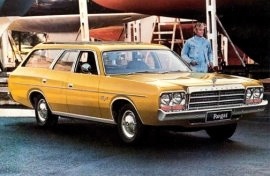 |
 |
|
| |
Also see: Chrysler Valiant Car Reviews and CL Valiant Specifications |
| |
The CL Valiant was supposed to be something special. Chrysler had been touting the fact that the all new Valiant VL would be an Australianised edition of the Plymouth Volare / Dodge Aspen intermediate sized car proving to be very popular in the US. But cost cutting measures were enforced upon the manufacturer in light of the growing trend of Australians to favour smaller 4 cylinder cars. In early 1976 the idea of creating a truly all new VL were all but shelved, and so the decision was made to once again make over the existing VH, VJ, VK model that had, with the latter models, been fast losing market share. |
|
 |
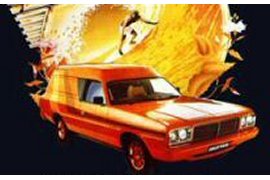 |
 |
|
| |
Also see: Chrysler Valiant Car Reviews and CL Valiant Specifications |
| |
When the Chrysler Panel Van hit the market, panel van sales had reached a staggering 18.5% of the total commercial vehicle market share. Powered by the 4 liter 245 Hemi low compression engine mated to a three-speed column shift manual transmission, it was possible to option it up to suit your needs. The standard equipment list included electronic ignition, dual headlights, dual-rate rear springs, front anti-roll bar and power assisted 280mm (11 inch) disc brakes at the front. Rear entry and egress was made via a two piece tailgate, the upper gate being supported by gas filled struts. For the youth market, Chrysler released the “Sports Pack” and “Drifter Pack”, both designed to take on the likes of the Holden Sandman and Ford Surferoo. |
|
 |
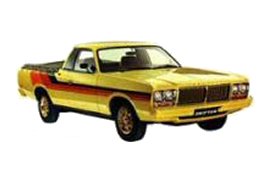 |
 |
|
| |
Also see: Chrysler Valiant Car Reviews and CL Valiant Specifications |
| |
Chrysler were quick to also offer the Drifter Pack in utility form, such as Holden were offering with their Sandman. The base Valiant panel van was priced from $5308, the Sports Pack from $5663 while the Drifter cost $6307. Despite a concerted marketing campaign designed to make the Drifter look the coolest of the Panel Vans around, it remained a sales disappointment for Chrysler. |
|
 |
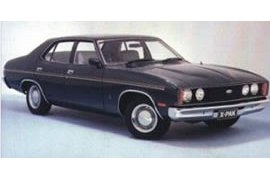 |
 |
|
| |
Also see: Ford Falcon XK to XC Car Reviews and Falcon XC Specifications |
| |
The XC was a further re-style of the third generation Falcon. The refined look was achieved by reducing the slope of the grille and introducing large rectangular headlamps on some models. The bonnet line was softened and more substantial bumpers fitted. The coke bottle effect was reduced by altering the style line running through the rear doors. The base model Falcon's retained the round headlights of their forebears, however the Fairmont was blessed with wonderfully elegant rectangular headlights. The rectangular headlights made the XC look cleaner and certainly more refined. With later models, Ford would black out much of the chrome work, giving the car a more menacing appearance.
|
|
 |
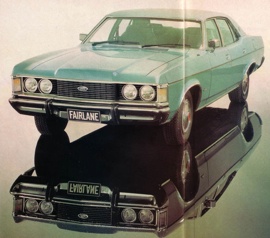 |
 |
|
| |
Also see: Ford Fairlane Car Reviews and ZH Fairlane Specifications |
| |
The ZH was Ford's answer to all the citiscism of its predecessors. While again retaining the central structure of the XC Falcon, the designers put much extra bulk into the car, not only giving it a big car look, but also actually lengthening it as well. It may have appeared as a radical increase to the amount of sheet metal over previous Fairlane's, however the Ford designers needed to regain a huge slump in Fairlane sales, coming off a high of 50.3 percent to an all time low of 27 percent in the early part of 1976. |
|
 |
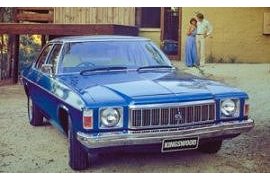 |
 |
|
| |
Also see: Holden HK to WB Car Reviews and Holden HX Specifications |
| |
The HX represented only minor cosmetic changes over the HJ, so much so that the HJ and HX are arguably the hardest pre-Commodore Holden models to tell apart. In fact, the major reason for the release of the HX was so that Holden could comply with the new Australian Design Rule 27a, a rule designed to lower exhaust emissions. Ford had, wisely, set about meeting the new design rule by performing some major surgery to their engines, most specifically in the re-engineering of the cylinder heads, a modification that made the engine both faster and cleaner. |
|
 |
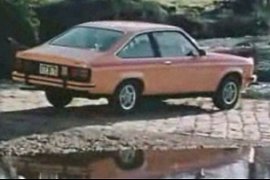 |
 |
|
| |
Also see: Holden Torana Car Reviews and LX Torana Specifications |
| |
A facelift of the LH model, the LX is best rembered for two reasons, the introduction of the hatchback and, unfortunately, the last to be fitted with a V8. The hatch was available is SL and SS versions, and in base form came equipped with a 3300 engine, however you could option the 253 4.2 liter V8, while the 5.0 liter V8 came as standard with the SS. The hatch looked great, however in practical terms the shallow boot did not swallow as much luggage as many thought it should. But at a time when the Sandman panel vans were enjoying ever increasing popularity Holden were to add the rather strange option of a tent-like accessory named the "Hatch-Hutch", that fitted to the rear hatch and extended outward from the rear creating a small tent area for camping et al. |
|
 |
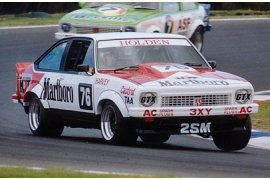 |
 |
|
| |
Also see: Holden Torana Car Reviews and LX Torana Specifications |
| |
The penultimate Torana, and one of the best ever Australian Muscle Cars, the Torana A9X became an overnight legend. That the Brock Commodore's would take four years to surpass their performance speaks volumes about the car's inate power and roadholding ability. The introduction of Radial Tuned Suspension on the LX Torana was announced with great fanfare, GMH running full page ads in most of the dailys. The HZ Holden came in for its share of publicity too, it being the first ever production Holden to sport four-wheel disc brakes. |
|
 |
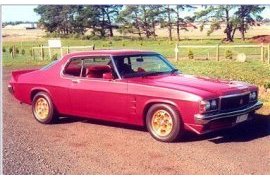 |
 |
|
| |
Also see: Holden HK to WB Car Reviews and Holden HX Specifications |
| |
This final coupe was exceptional and exclusive enough to ensure that the original Monaro concept had an appropriate send-off. Although the limited edition LE coupe did not carry the Monaro nameplate, Holden fans regard it as a true blue member of the breed. The LE arrived in August 1976, almost two months after the HX series release. The run of just 580 LE coupes was produced at Holden's Pagewood plant in Sydney, which specialised in the exacting low volume assembly of luxury Statesman and Caprice models. |
|
 |
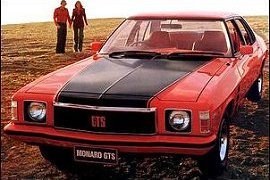 |
 |
|
| |
Also see: Holden HK to WB Car Reviews and Holden HX Specifications |
| |
The HX arrived in July 1976 as the Australian automotive industry concentrated on meeting new anti-pollution requirements. There was no Monaro coupe in the new HX line-up, but the name was emblazoned on a single, extroverted GTS four door. Its bright colors, large GTS decals, color-keyed mirror and bumpers, integrated body-coloured spoiler options and optional bonnet black-out made it the most distinctive of all four door Monaros. |
|
 |
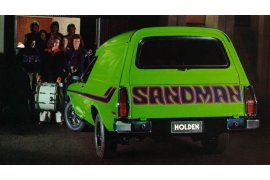 |
 |
|
| |
Also see: Holden HK to WB Car Reviews and Holden HX Specifications |
| |
Released in July of 1976 the HX Sandman had all the features of the previous model with the major refinement being the steering column mounted windscreen wiper/light dipper switch, however its detoxed engine combinations were a problem as in the Monaro. |
|
|

|
|
 |
|
|
|
